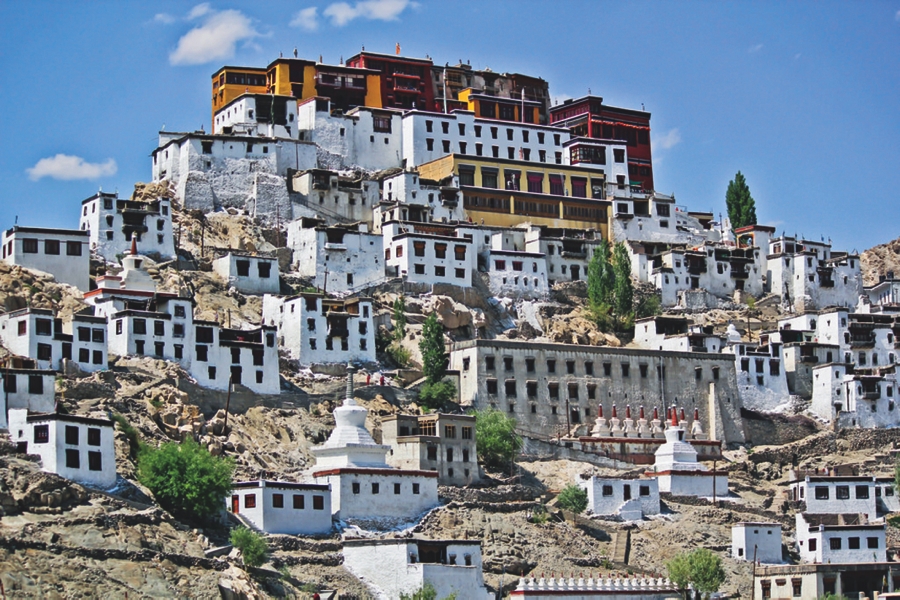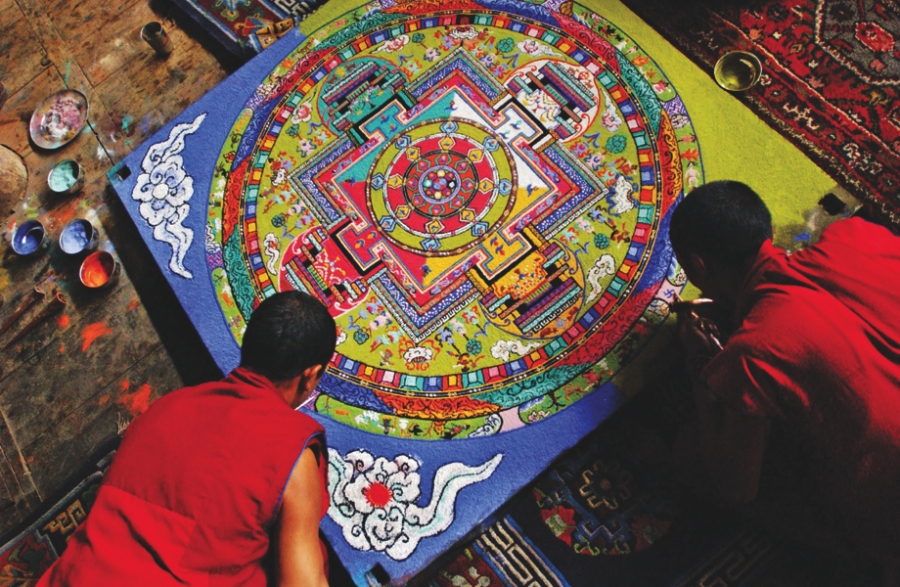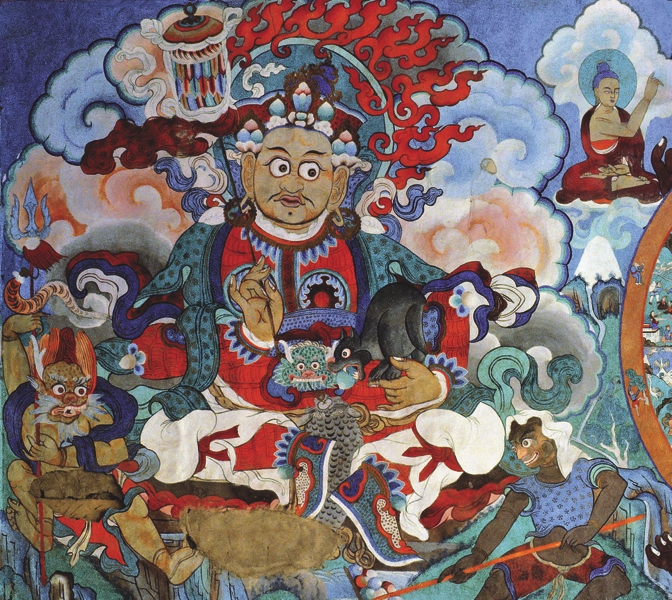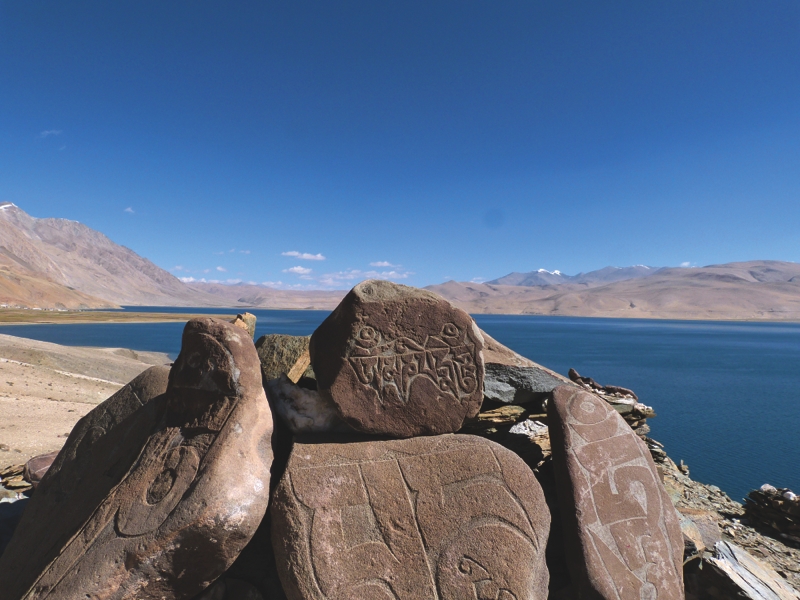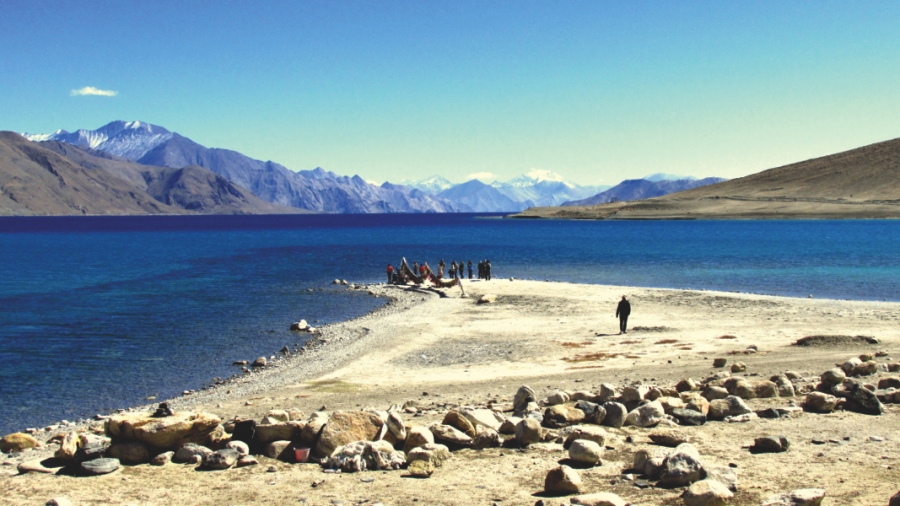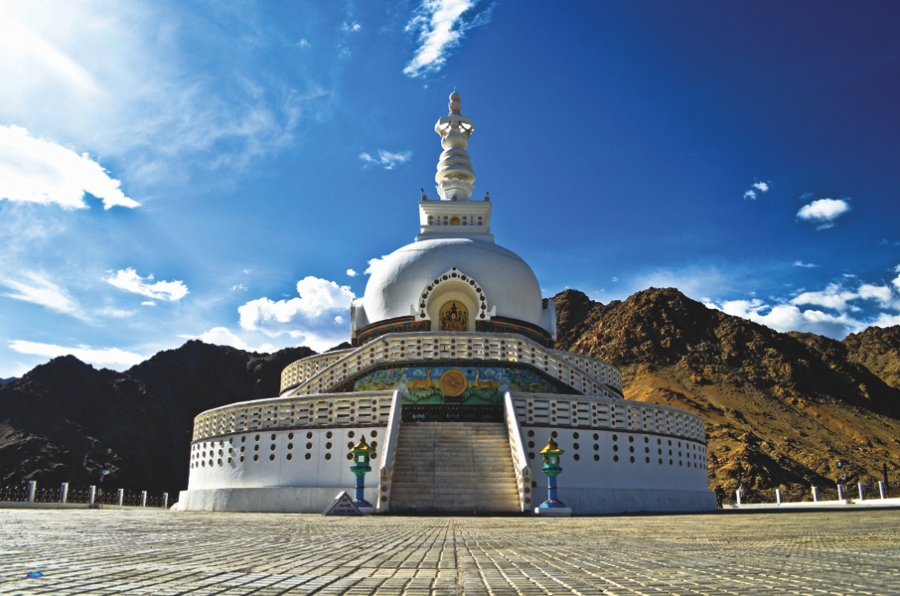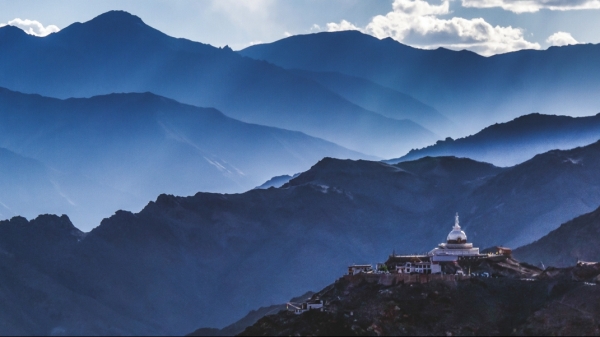
Land of Extremes

A road trip through Ladakh, India, is the ultimate adventure
The mountains are so barren and devoid of green that the landscape could be mistaken for the moon’s surface. Streams trickle down the mountains like liquid serpents, snaking their way around treacherous curves. The lakes, glimpsed through the mountain passes,are placid and of the bluest hue possible.
This land of extremes is Ladakh, India – and it’s every bit as breathtaking as it sounds. Located in the northern state of Jammu and Kashmir, which stretches from the Kunlun mountain range to the Himalayas, Ladakh is certainly not easy to reach.
An airport services the state’s capital city, Leh, and vehicles are available for rent upon arrival. Foreign travellers must also obtain permits to visit certain areas, which can be secured through their hotels or through government offices in Leh.
It may sound arduous, but those willing to put in the effort and brave the winding roads will be rewarded with otherworldly views.
The first glimpse of the majestic mountains from the plane promises an epic adventure just waiting to unfold. When the pilot announces that the plane will begin its descent, there’s a buzz among passengers, who wonder aloud where exactly the pilot will land amidst so many mountains.
Indeed, Leh airport is one of the world’s highest airports at more than 3,200m. Planes land and take off only in the mornings because it’s an exceptionally risky runway, with fierce winds and the mountainous terrain acting as dual challenges for pilots.
The other way to reach Ladakh is by road via the Srinagar-Leh highway or the Manali-Leh highway. Both offer spectacular views of the Himalayan mountain range, and they’re as thrilling as one can expect from an extreme road trip.
In the midst of these barren, indifferent mountains, little monasteries and palaces have been built, as if to challenge nature. Most have been gnawed at by the passage of time, but still they stand as resilient symbols of the persistent nature of humans. The Leh Palace, for example, still remains a towering architectural feat. Inspired by the Potala Palace in Lhasa, it stands at nine storeys tall. Though mostly in ruins now, it’s easy to imagine how it must have flourished as the centre of the Namgyal dynasty in the 17th century.
Another great architectural wonder is the Thiksey Monastery. Built in the 15th century, the monastery is 12 storeys and is by far the largest monastery in Ladakh. Several hundred monks and their trainees still reside there, and during the annual Ladakh festival in September, the monastery truly comes to life.
But in the midst of life, there is also death. A village called Khalsar was swept away by a cloudburst a few years ago, and only a giant prayer wheel remained standing in the rubble.
Look a little closer, though, and you’ll see that the intimidating barrenness is dotted with hubs of thriving, pulsating life. Take Leh, for instance. For such a tiny place, it’s packed to the brim with people of all ethnicities. At a height of 3,500m, Leh is as modern as any major city in the world. Tourists from across the globe flock here for adventure sports such as mountain biking, white water rafting and trekking. The annual marathon in September also draws a crowd.
For a city that’s surrounded on all sides by mighty mountains, Leh does a commendable job of providing amenities and activities to fit every budget and interest.
Even the most discerning of guests will be able to enjoy quiet luxury in a premium hotel such as The Grand Dragon Ladak, or a sustainable boutique property such as Nimmu House. Both offer all the comforts one would expect, all while retaining a quaint, rustic charm.
Where Leh is throbbing with life, Diskit in the Nubra Valley is a sleepy little hamlet. The major attraction is the double-humped Bactrian camel,which is almost unique to the region.
Even more fascinating, though, is the landscape itself, which is starkly different from other parts of Ladakh. A cold desert stretches across the valley as far as the eye can see, with the Karakoram mountains towering above it on one side and the Himalayas on the other.
To reach Nubra Valley, one has to cross the famous Khardung La Pass, which is an adventure in itself. At about 5,350m above sea level, it is one of the highest motorable roads in the world. It is also historically significant, as it was once a major caravan route that ran from Kashmir to Kashgar in modern-day Xinjiang, China.

For many tourists, it’s a real thrill to be on the Khardung La Pass, but it’s not advisable to loiter there for more than 30 minutes. The shortage of oxygen starts to get to you, and “dizzying heights” can take on a literal meaning. That’s why, upon arriving in Ladakh, it’s best to give yourself time to relax and acclimatise to the low oxygen levels.
However, this is a contingency that all vehicles in Ladakh are prepared for. Every car has spare oxygen cylinders for emergency situations. It’s advisable to rent sturdy SUVs while travelling Ladakh’s roads, which are patchy in places despite the Indian army’s efforts to enhance road conditions.
If a death-defying drive along the mountain pass proves to be too much excitement for one day, head to Pangong Lake near the Chinese border for some peace and tranquillity. Few words can suitably describe the splendour of the lake’s pristine blue waters, which seem to be untouched by civilisation.
Several semi-permanent camps are set up at the edge of the lake, and they’re rented out to tourists who feel they can brave the cold. For those who want something cosier, log cabins are set up slightly further away. Meal options are frugal and limited,but in a place that seems to be straight out of a fairy tale, physical discomforts can be overlooked.
Travellers who continue their ascent will ultimately reach Tso Moriri, or Mountain Lake, which is situated at a height of 4,500m. The 235km drive from Pangong Lake to Tso Moriri through the remote Changthang region is one of the most beautiful and jaw-dropping drives on Earth. There are no petrol pumps along this stretch of road, so stocking up on fuel and food is imperative.
Despite these extreme conditions, it’s a popular route and people flock to Tso Moriri, seemingly drawn by the force of nature. Like Pangong, Tso Moriri is a stunner in the looks department, and is one of the few places surrounded by green grass.
The entire Ladakh region is beautiful year-round, but the peak tourist season is from April to September. Tourists come and go, but the people who call Ladakh their home wage a battle against nature every day. In a land so arid that hardly any vegetation grows, and so remote that its few roads have to be maintained by the army, the fight to live is real.
Yet, Ladakhis go about their business matter-of-factly and without resignation, because to live is to hope, and the next day is both a challenge and a miracle. For travellers looking to experience the extremes of nature in all its tremendous and taxing forms, there are few better destinations than Ladakh.
Text: Suchetana Mukhopadhyay

